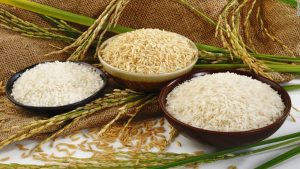
The largest rice exporter in the world, India, banned some rice exports on July 20, 2023, stating growing local costs, inflation concerns and the need to guarantee food security. Considering that India accounts for more than 40% of global rice exports, this action had a major impact on the world’s rice markets. The decision mostly affects exports of white rice that isn’t basmati, which is essential for numerous developing countries.
Reasons Behind the Ban:
- Rising Inflation and Food Prices: Due to unpredictable monsoons, uneven rainfall, and climatic conditions made worse by climate change, India saw a dramatic increase in the cost of food in 2023, especially basics like rice. Unpredictable weather patterns had an influence on rice crops, causing shortages in a few regions of the nation. This action was taken by the government to stop more price inflation and guarantee an adequate supply for the country’s people.
- Food Security Concerns: It was critical to guarantee domestic food security. Since a significant percentage of India’s population relies heavily on rice as a staple meal, the government wished to prevent a situation in which exports resulted in severe inflationary pressures or local shortages.
- International Impact: Global markets felt shaken by the restriction. Sharp price increases and supply chain disruptions were experienced by nations in Southeast Asia and Africa that depend significantly on Indian rice.The impact of India’s six-month-old rice export limits, which were imposed to keep local prices low, is still being felt in the world’s rice markets. Since India’s export prohibition on non-basmati white rice went into force in July 2023, the benchmark price of Thai white rice (5% broken) has increased by 22%. The disruption of global supply has resulted from a substantial decline in the export of non-basmati white rice, parboiled rice, and broken rice, which are all products of India that are banned.
To balance local food security and international demand, India established a Minimum Export Price (MEP) for rice exports. The MEP, which is mostly applied to non-basmati white rice, is the lowest price at which Indian rice may be marketed abroad. This policy prioritizes countries in need, especially those experiencing food shortages, and ensures that rice exports continue at controlled levels while reducing inflation and local shortages.
Resumption of Rice Exports:
The government established a minimum export price (MEP) of $490 per tonne and eliminated the restriction on non-basmati white rice shipments to other countries on Saturday. The intended purpose of the prohibition, which had been in effect since July 20, 2023, was to improve the supply of domestic rice. “The export policy for non-basmati white rice (semi-milled or wholly milled rice, whether or not polished or gazed) …is amended from prohibited to free, subject to MEP of $ 490 per tonne with immediate effect and until further orders,” according to the DGFT. With 32.3 million metric tons of rice on stock at the state-run Food Corporation of India as of September 1, 38.6% more than the same period last year, the government has ample of chance to relax restrictions on rice exports.
#Indianrice#Paddy#Exports Ban#Indianriceexportsban#MEP#IndianExports#IndianTrade#